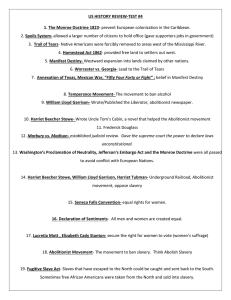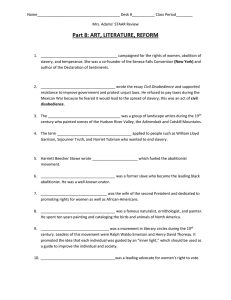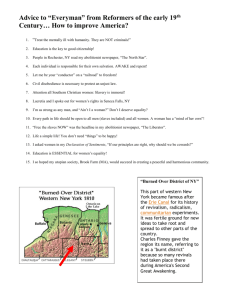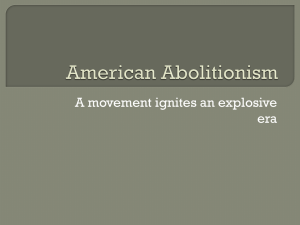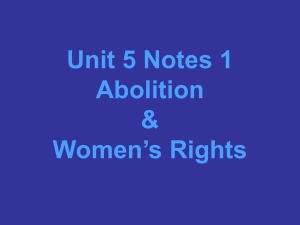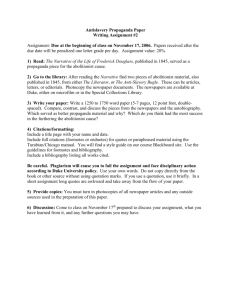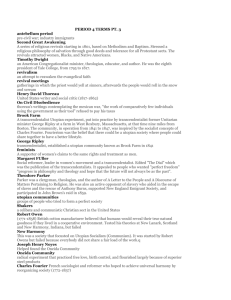Six Steps for Teaching Vocabulary
advertisement
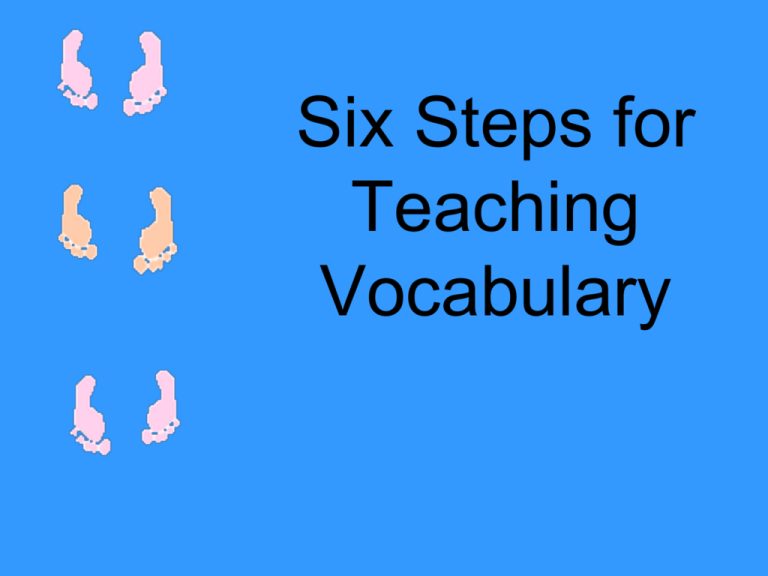
Six Steps for Teaching Vocabulary Step One- Explain • Provide a student friendly description, explanation, or example of a new term. (Teacher) For example: Tell a story using the term Use video or computer images as a source of information. Use current events to connect the term to something familiar. Find or create pictures that exemplify the term. Abolitionist - Legal argument, 1855 Theodore Parker prepared a defense against the charge that he incited an abolitionist riot. . . Gentlemen, when the kidnappers [fugitive slave catchers] came to Boston [and] were seeking to kidnap the Crafts, I took Ellen to my own house, and kept her there so long as the (Southern) kidnappers remained in the city. For the first time I armed myself, and put my house in a state of defense. For two weeks I wrote my sermons with a sword in the open drawer under my inkstand, and a pistol in the flap of the desk, loaded, ready, with a cap on the nipple…."A process was in the hands of the [federal] marshal... 'in the execution of which, he might be called upon to break open dwellinghouses, and perhaps to take life, by quelling resistance actual or 'threatened.'" I was ready for him. I knew my rights. Source: http://www.massmoments.org/primary_source.cfm?mid=102 Step Two -Restate Ask students to restate the description, explanation, or example in their own words. (Teacher) Crucial that students “own” the terms –does not copy what the teacher said or wrote. Record in a vocabulary notebook Step Three-Show Ask students to construct a picture, symbol, or graphic representation of the term. (Teacher) Requires students to process information in a nonlinguistic way. Students will need guidance and modeling especially with terms that are difficult, new or abstract. Abolitionist – Someone who wanted no more slavery. Make a cartoon representation. Step Four-Discuss Engage students in discussions activities that help them add to their knowledge of the terms in their vocabulary notebooks. (Student) Compare and contrast terms Antonyms and synonyms Analogies and metaphors Students should at this point begin to revise entries in their notebooks. Abolitionist Antonym supporter Synonym opponent, objector, protester, eradicator, adversary, enemy, foe Analogy – Abolitionist is to slavery as prohibitionist is to __________ Abolitionist slavery as against prohibitionist alcohol Step Five- Refine and Reflect (Student) Ask students to return to their notebooks to discuss and refine entries. Compare the descriptions of their terms Describe the pictures to one another Explain new thoughts Identify areas of disagreement or confusion Seek clarification Think Pair Share 1) Think. The teacher provokes students' thinking with a question or prompt or observation. The students should take a few moments (probably not minutes) just to THINK about the question. 2) Pair. Using designated partners (such as with Clock Buddies), nearby neighbors, or a deskmate, students PAIR up to talk about the answer each came up with. They compare their mental or written notes and identify the answers they think are best, most convincing, or most unique. 3) Share. After students talk in pairs for a few moments (again, usually not minutes), the teacher calls for pairs to SHARE their thinking with the rest of the class. The teacher or a designated helper might record these responses on the board or on the overhead. Step Six – Apply words in Learning Games (Student) Involve students in games that allow them to play with the terms. Crossword puzzles Talk a Mile a Minute Name That Category Draw Me TIME Not all vocabulary words in all units need to be done by the six steps.
